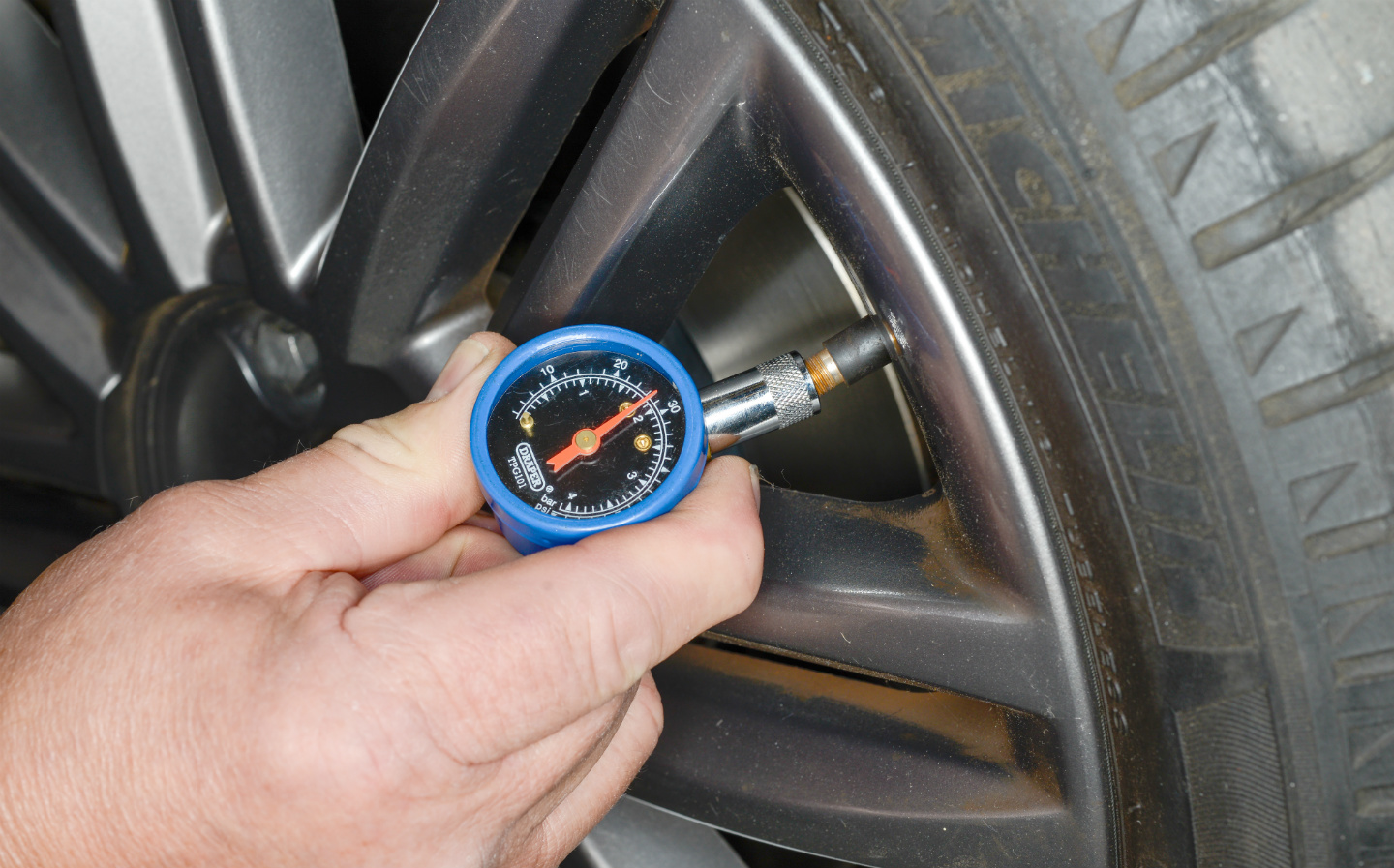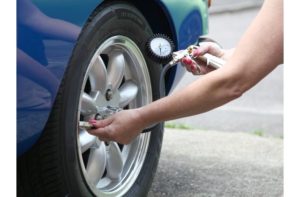When purchasing a used vehicle, most people are concerned about finding a specific make or model, body style, performance package, amenities, or even color. One thing buyers may not give much thought to is the vehicle’s tires. While the tires may not be among the first things on your mind when purchasing a vehicle, they probably should be. While tires do tend to get overlooked, they are arguably the most important component on your vehicle. After all, tires are what allow you and your vehicle to roll down the road.
The main functions of a vehicle’s tires include supporting the vehicle load, transmitting traction and braking forces to the road surface, absorbing road shocks, and changing and maintaining the direction of travel. To ensure these functions are being adequately met, there are some important things to inspect on each of your vehicle’s tires on a regular basis, including the tread depth of your tires, the wear, the air pressure, and any damage or signs of deterioration.
Tread depth is essential to a well-performing tire. Water accumulates on the road during wet conditions. Tires need tread for better traction during these harsh conditions. The grooves on your tires work to siphon water away from the surface of the tires when the road is wet. If the tread on the tires is not at the proper depth, it can become difficult for enough water to be carried out from beneath the tires, thus increasing the possibility that you could lose control of the vehicle. When a vehicle is traveling too fast, or the tire treads are not able to channel enough water out from beneath the tire, hydroplaning may occur. Hydroplaning is when your vehicle’s tires lose contact with the road and skim across a thin layer of water instead, causing a loss of control of the vehicle.
Wear and tear of your vehicle’s tires is a normal result of driving. However, you may notice that certain areas of your tires, or even one or two of your tires, may be showing more wear than others. Uneven tire wear can be a result of a variety of causes including under or overinflated tires, inner or outer edge wear due to improper wheel alignment, cupping resulting from faulty suspension components, and feathering due to an improper toe setting. The toe setting is the direction the tires point in relation to the centerline of the vehicle. Uneven tire wear can significantly reduce the life of your tires, which may end up costing you a lot of money.
Your tires have an air pressure specification. If they are over or underinflated your tires will suffer, as will your gas mileage and driving maneuverability. A quality tire air pressure gauge is all you need to inspect your tire air pressure. The pressure gauge will allow you to measure the pounds per square inch (PSI) of each of your tires and make sure they are inflated to the manufacturer’s recommended pressure. Most passenger car tires should have between 32 and 35 psi pressure when they are cold. By maintaining the correct tire pressure, you will ensure better fuel economy, and your vehicle will be a much safer and more comfortable driving machine. You should never try to visually estimate the inflation pressure of your tires. Always use a tire pressure gauge. Weather temperatures affect your tire pressure. Cold weather will cause tire air pressure to drop, while warm weather will cause tire pressure to increase. You should check your tire pressure periodically as part of good vehicle maintenance. It is especially important to check it when the seasons change. Many modern vehicles come equipped with a tire pressure monitoring system (TPMS). An icon on your dashboard will alert you if the system has detected changes in the tire air pressure.
Overinflated tires become rigid and stiff, causing the tire’s contact patch, the amount of rubber that touches the road, to be reduced. This leads to a less comfortable ride, as well as uneven tread wear. The most common type of uneven tread wear is due to over inflation and is referred to as center wear. Exactly what it sounds like, center wear refers to the center of the tire becoming worn down and smooth with more tread on the sides of the tire. Overinflated tires are also more susceptible to damage from everyday road hazards such as potholes, curbs, and imperfections in the road.
Underinflated tires have adverse effects, as well. Underinflated tires do not hold their shape and are flatter to the ground. Therefore, more of the tire’s surface touches the road, causing the shoulders of the tire to wear prematurely. This is referred to as shoulder wear. Underinflated tires develop a strip of normal tread down the center of the tire, while the shoulders of the tire become worn down and smooth. Underinflated tires are more flexible when they roll, leading to increased rolling resistance and a decrease in fuel economy.
Damage and deterioration can be found during regular tire inspections. Inspect the tire tread and sidewalls for cracking, scrapes, bulges, cuts, snags, punctures, foreign objects, or other damage resulting from every day use. Remove any stones, glass, foreign objects, nails, screws, etc., embedded in the tread to prevent further damage. Even minor damage and debris can lead to further damage and eventual tire failure. Tires with excessive tread and sidewall cracking should be removed from service. Make sure the valve stem on each of your tires has a valve cap to keep moisture and dirt out.
It is also important to inspect your spare tire and make sure it is ready to be used if necessary. Know where the vehicle’s jack and lug wrench are located and make sure they are ready to use.
The balance and placement of your tires is important, as well. Unbalanced tires will affect the handling of your vehicle, potentially leading to costly repairs. Regular tire rotations help extend the life of your tires and even out tire wear by allowing each tire to serve in as many of the vehicle’s wheel positions as possible. It is an advantage when all four tires wear out together because you can get a new set of tires without being forced to buy pairs. Have your tires rotated every six months or 6,000 miles and the tire balance checked annually.
When replacing your tires, do not assume all tires and brands are alike. There are dozens of tire brands available, each of which has their own pecking order of quality. Similar to choosing name brand appliances or designer clothes for their level of quality, consider the quality of your vehicle’s tires carefully. Do your homework about which tires best suit your geographical area, weather conditions, driving habits, and budget. Also, when you have your tires replaced, have new valve stems installed at the same time.
Take the time to inspect and learn about the tires on your vehicle. Thoroughly inspect your tires at least once a month and ensure the right amount of air pressure is always present. Take care of your tires, and they will take care of you.



I like that you talked about how while tires tend to get overlooked, they are arguably the most important component on your vehicle. My uncle just bought a second hand sports car, but it looks like the provided tires aren’t fit for the car. So with that in mind, I think he should get some Toyo Proxes RR888R race tires.
That could be a nice tire. Whats the car?